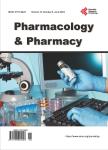Frequency and Antimicrobials Susceptibility Pattern of <i>Staphylococcus aureus</i>Associated with Wound Infections in Surgery Department, Wad Madani Teaching Hospital, Sudan
Frequency and Antimicrobials Susceptibility Pattern of <i>Staphylococcus aureus</i>Associated with Wound Infections in Surgery Department, Wad Madani Teaching Hospital, Sudan作者机构:National Blood Bank Ministry of Health Khartoum Sudan Department of Medical Parasitology Faculty of Medical Laboratory Sciences University of Gezira Wad Medani Sudan Department of Medical Microbiology Faculty of Medical Laboratory Sciences University of Gezira Wad Medani Sudan Wad-Madani College of Medical Sciences and Technology Wad Medani Sudan Faculty of Pharmacy University of Gezira Wad Medani Sudan
出 版 物:《Pharmacology & Pharmacy》 (药理与制药(英文))
年 卷 期:2021年第12卷第12期
页 面:334-343页
学科分类:0502[文学-外国语言文学] 050201[文学-英语语言文学] 05[文学]
主 题:Staphylococcus aureus Surgical-Sites Wounds Meropeneme Sudan
摘 要:Background: Mostcommunity and hospital acquired infections are due to Staphylococcus aureus, these infections involve both local suppurative and systemic conditions. There is an increase in the incidence rates of acquiring resistant strains of Staphylococcus aureus in hospitals and community in Sudan. This study aims to detect frequency of Staphylococcus aureus isolated from surgical-sites infections (SSIs) and traumatic wounds, and to determine susceptibility to commonly used drugs. Methods: Prospective cross-sectional laboratory based study was followed, 250 patients admitted to Surgery Departments at Wad Madani Teaching Hospitals during 2019 and 2020 were recruited;with clinical manifestation of SSIs and or/traumatic wounds. Swab sample was taken from each participant and incubated aerobically on mannitol salt agar. Biochemical tests and 16rRNA gene used for Staphylococcus aureus identification. Antimicrobial susceptibility was accomplished using Kirby Bauer disc diffusion technique. Results: Infection rate of wounds in males and females equal 71% (17/250) and 29% (73/250), while infection rate in the age group of 41 to 60 y



